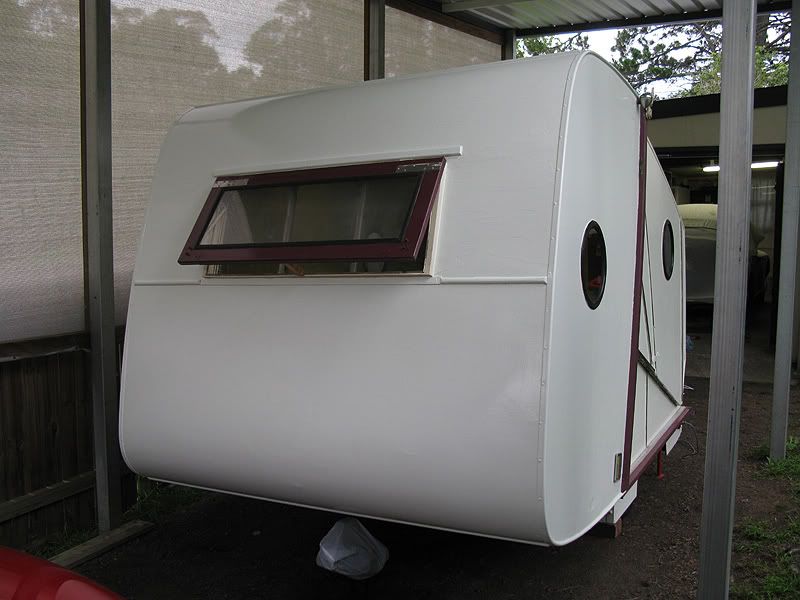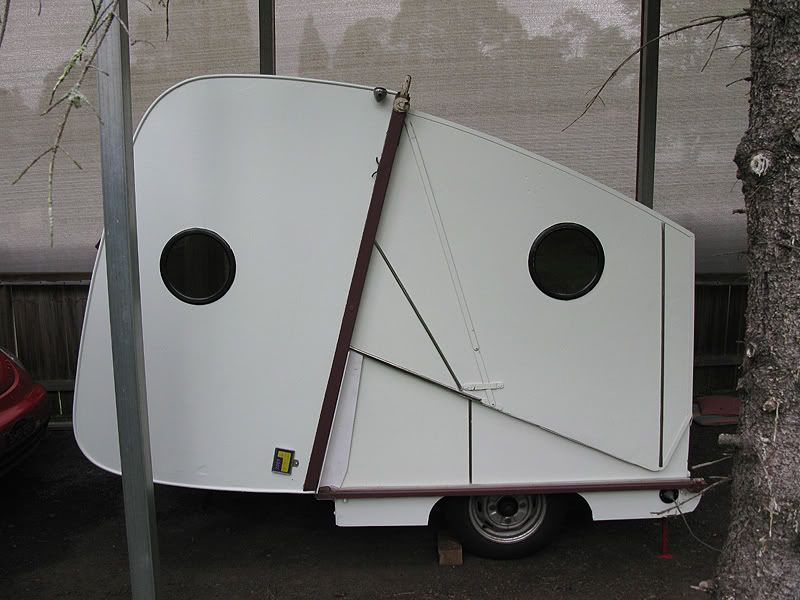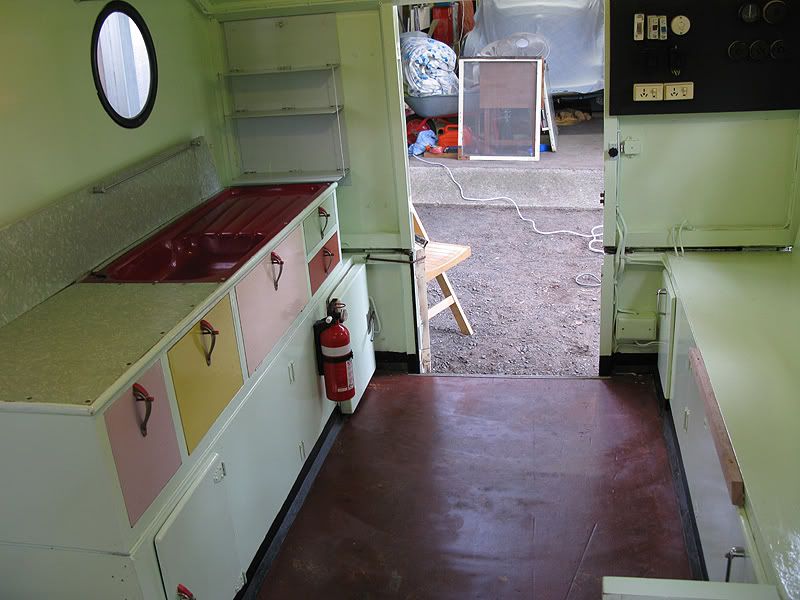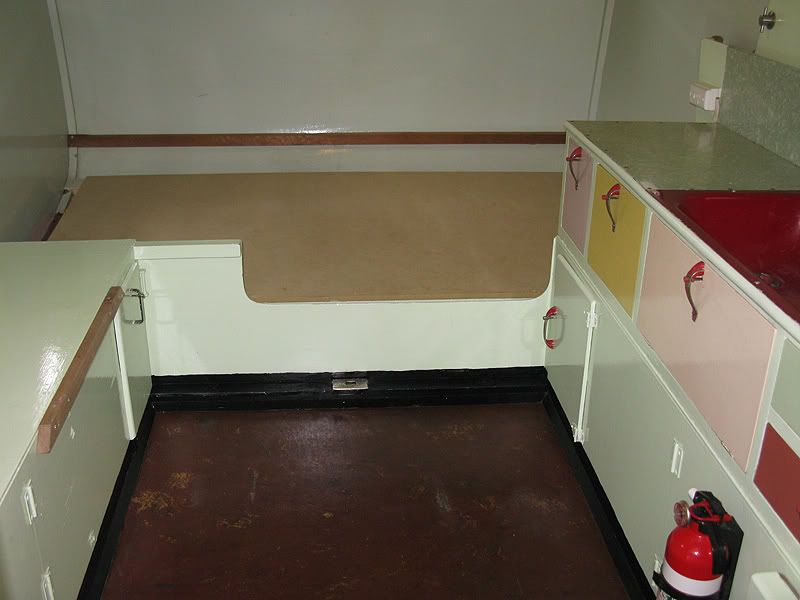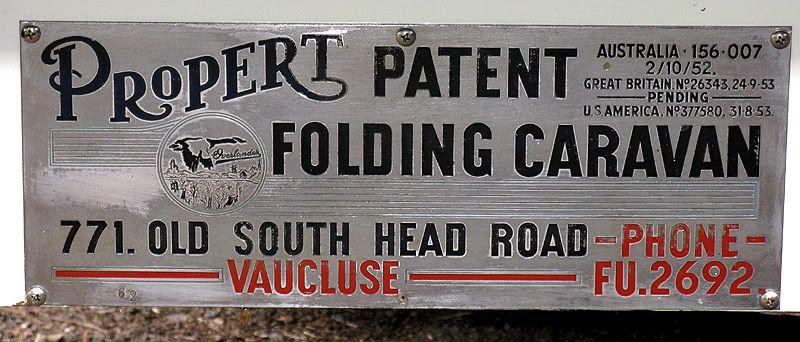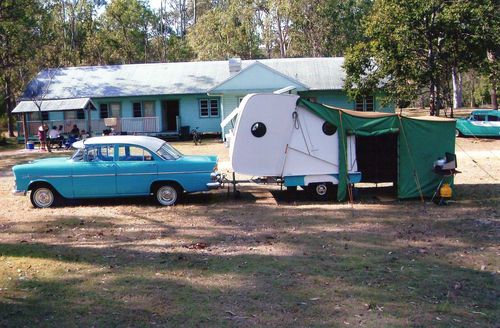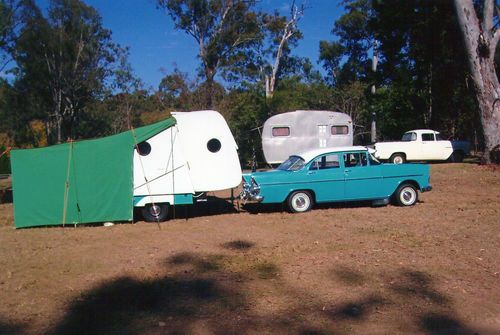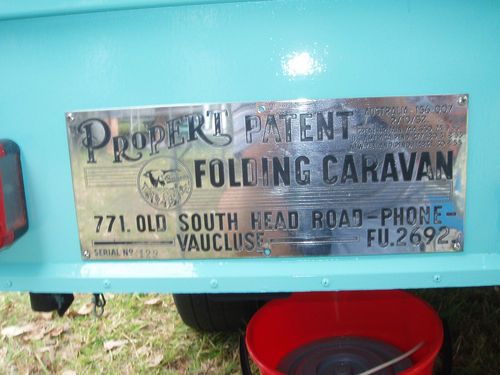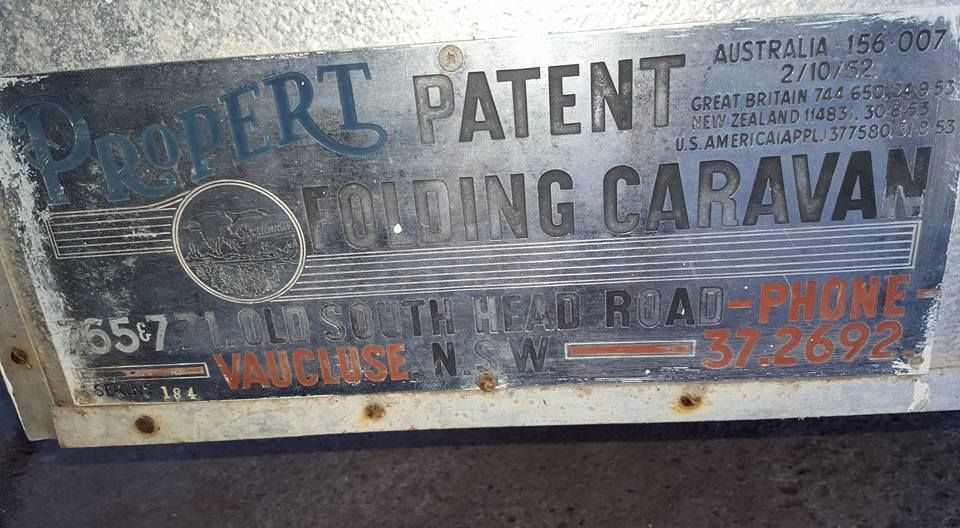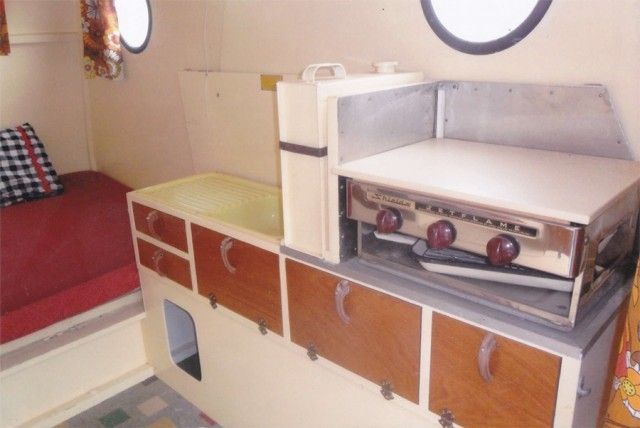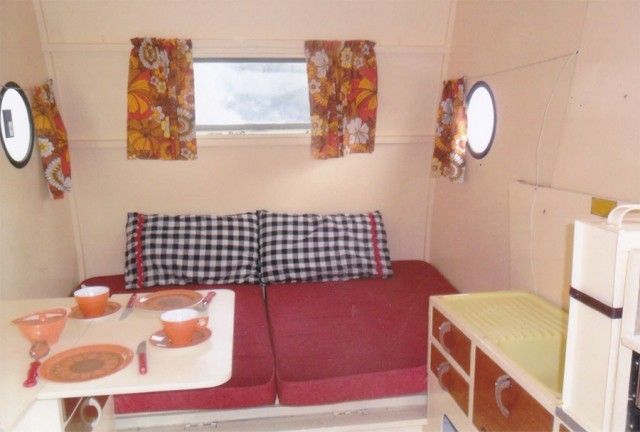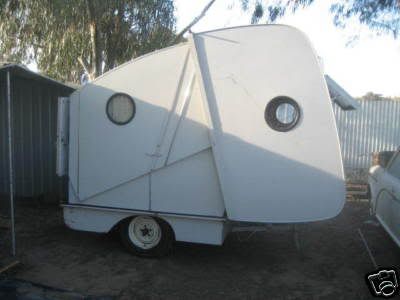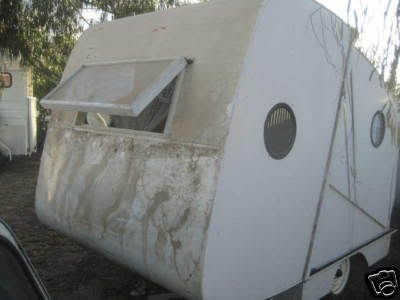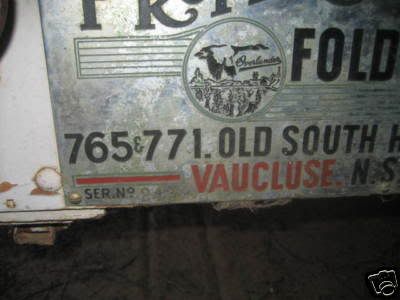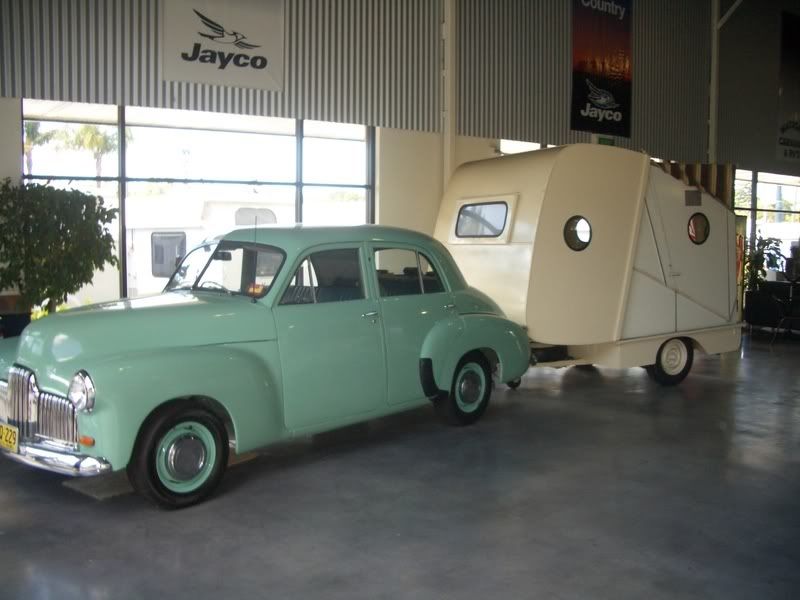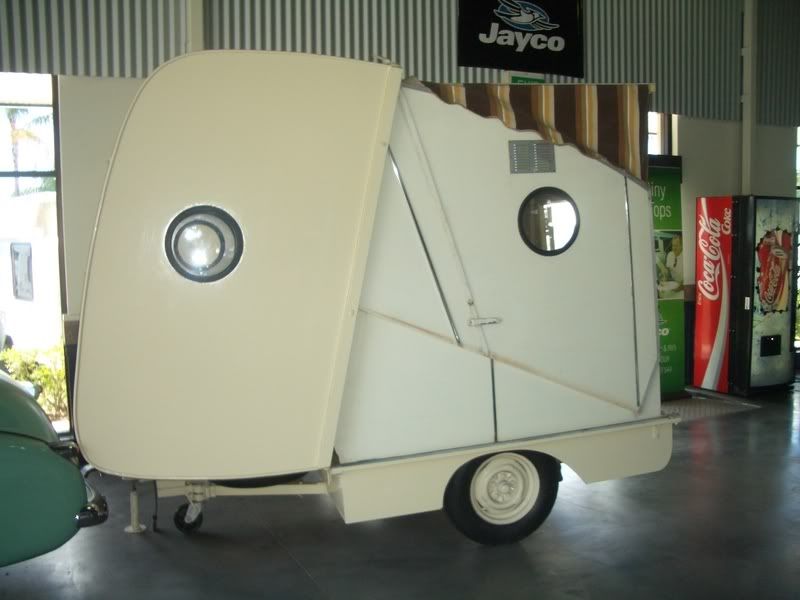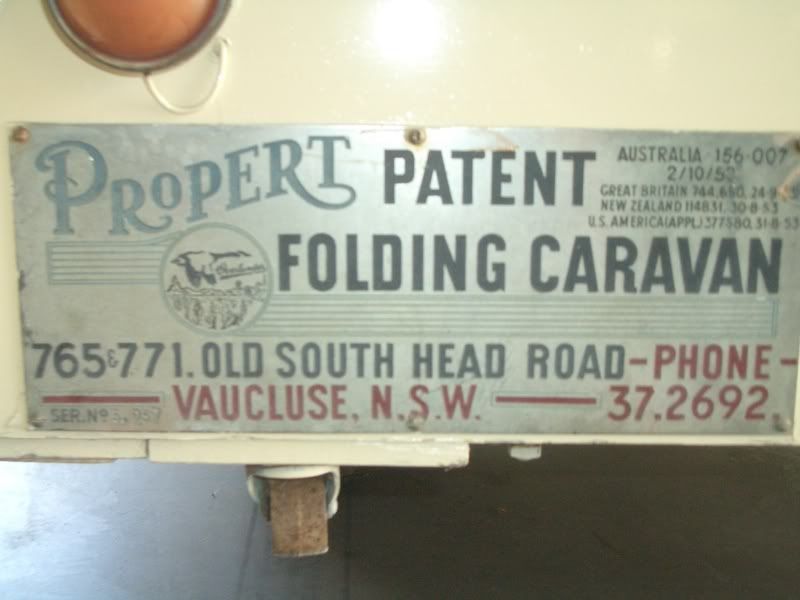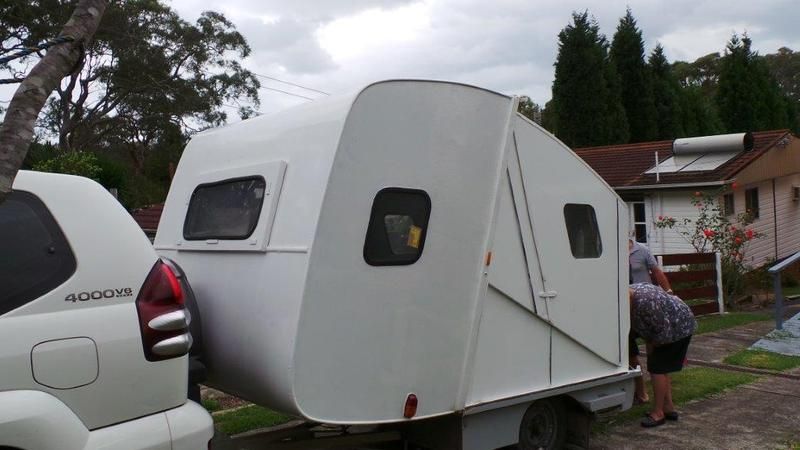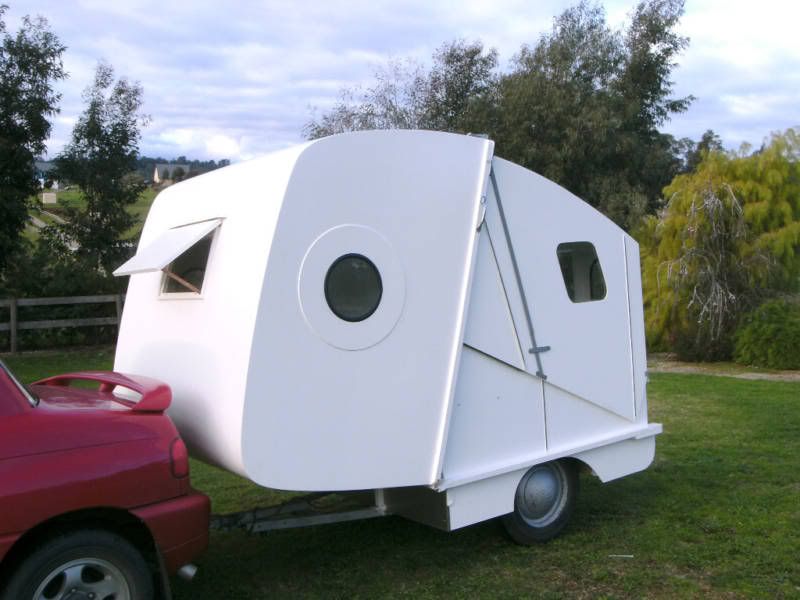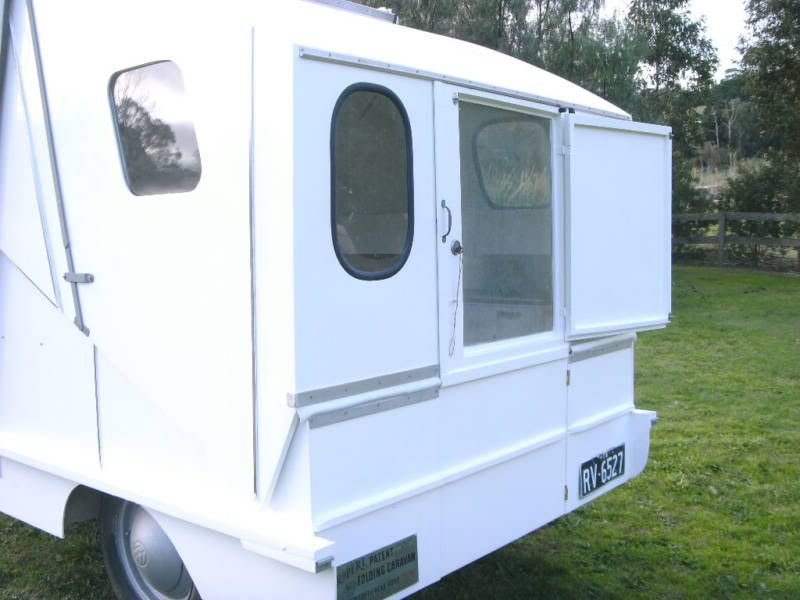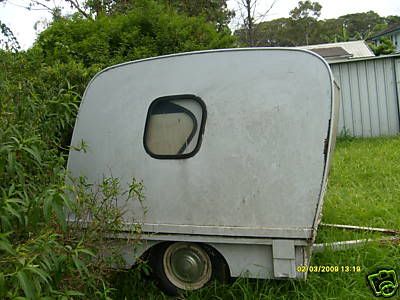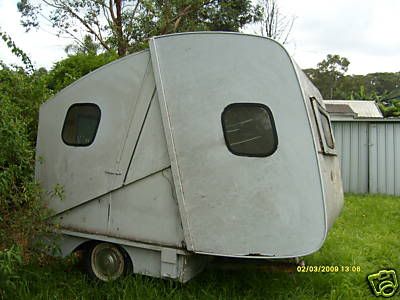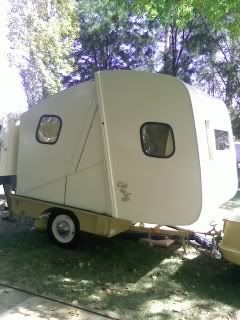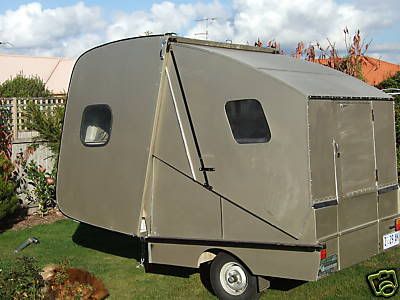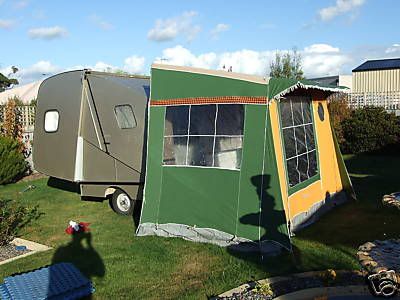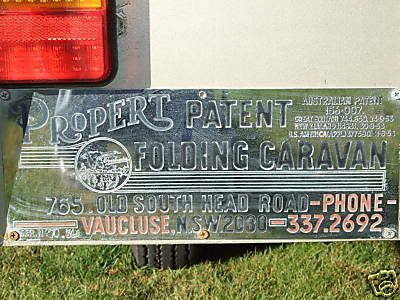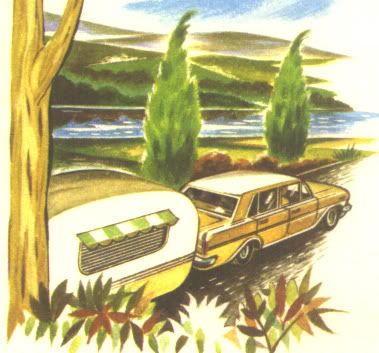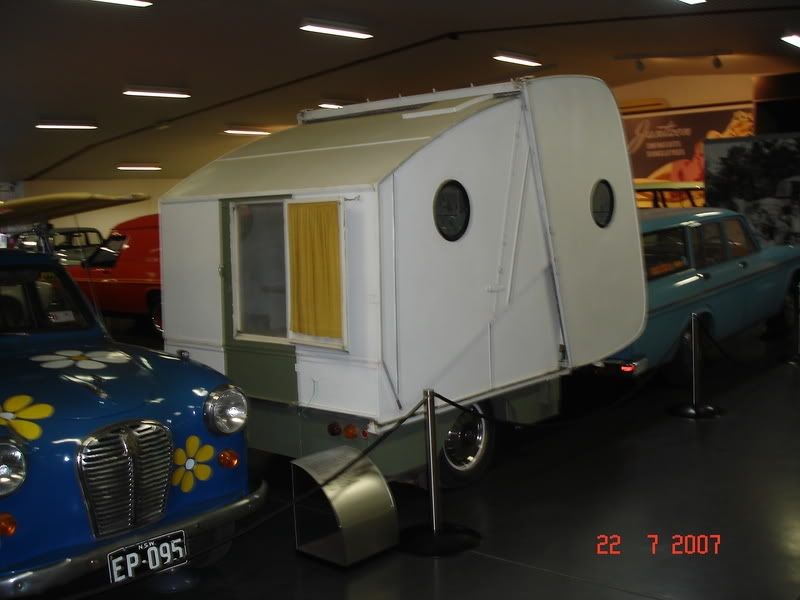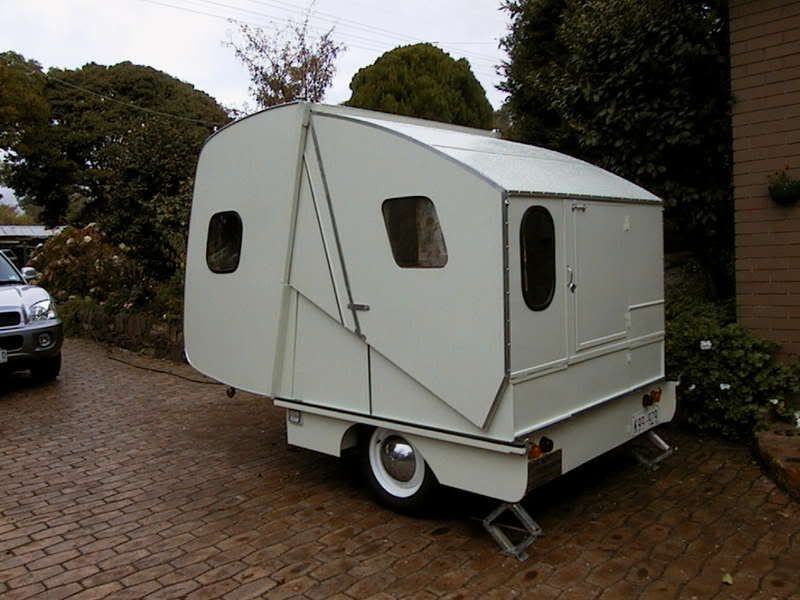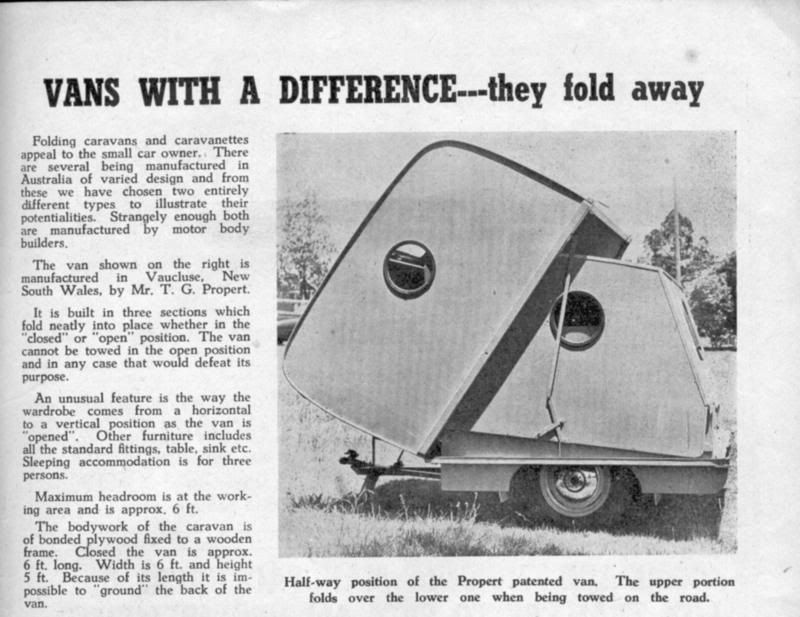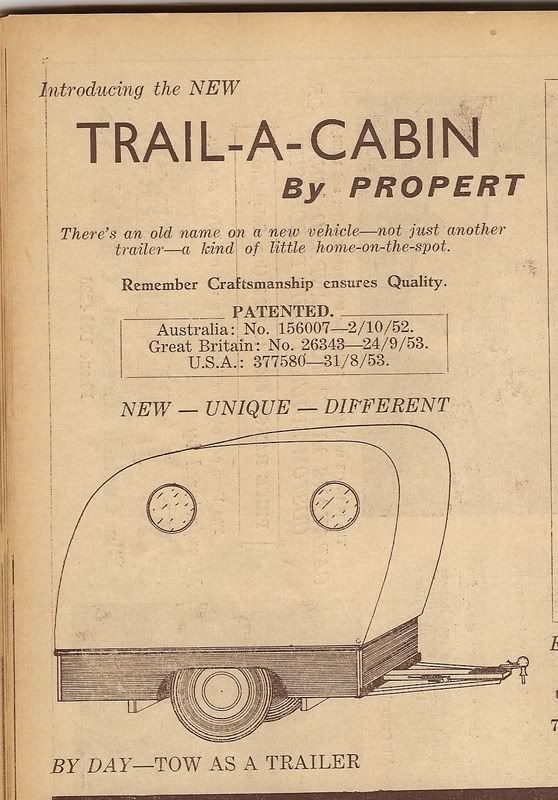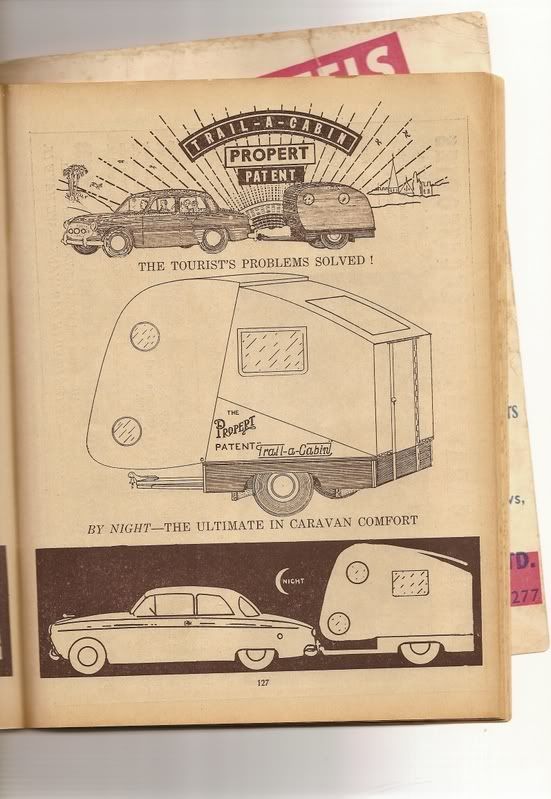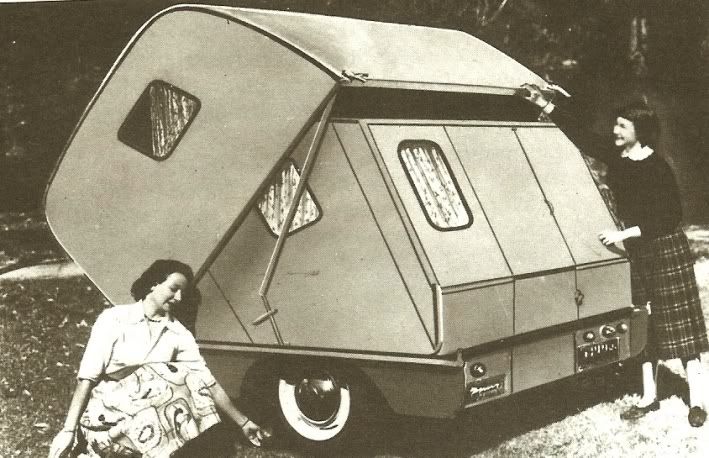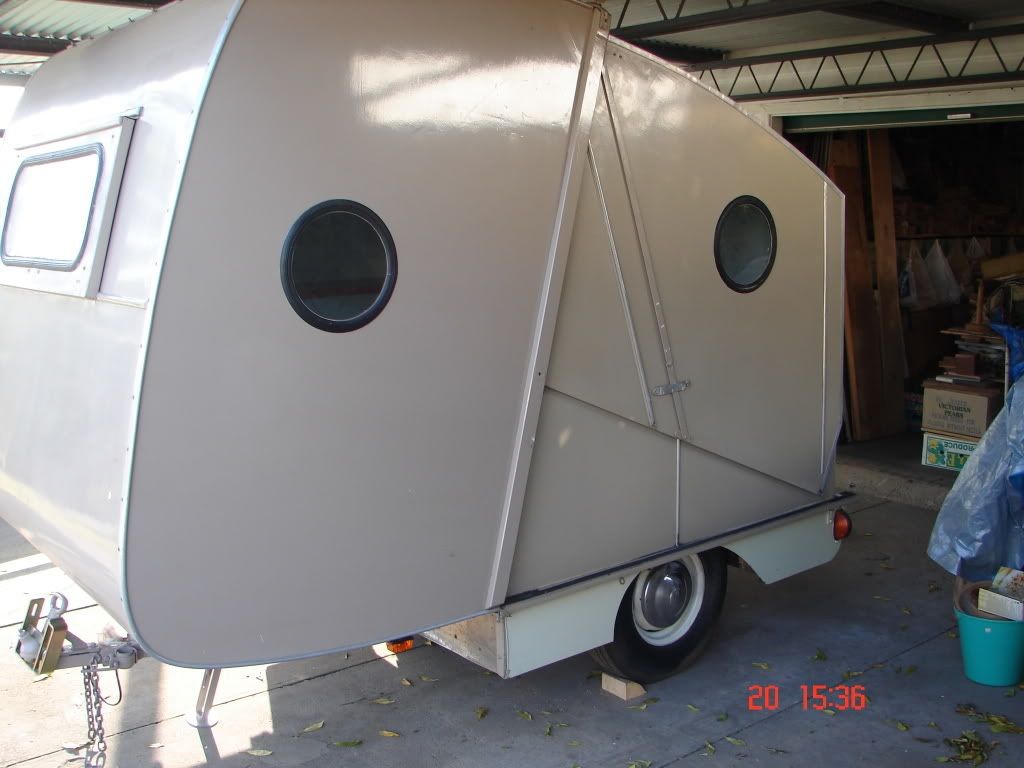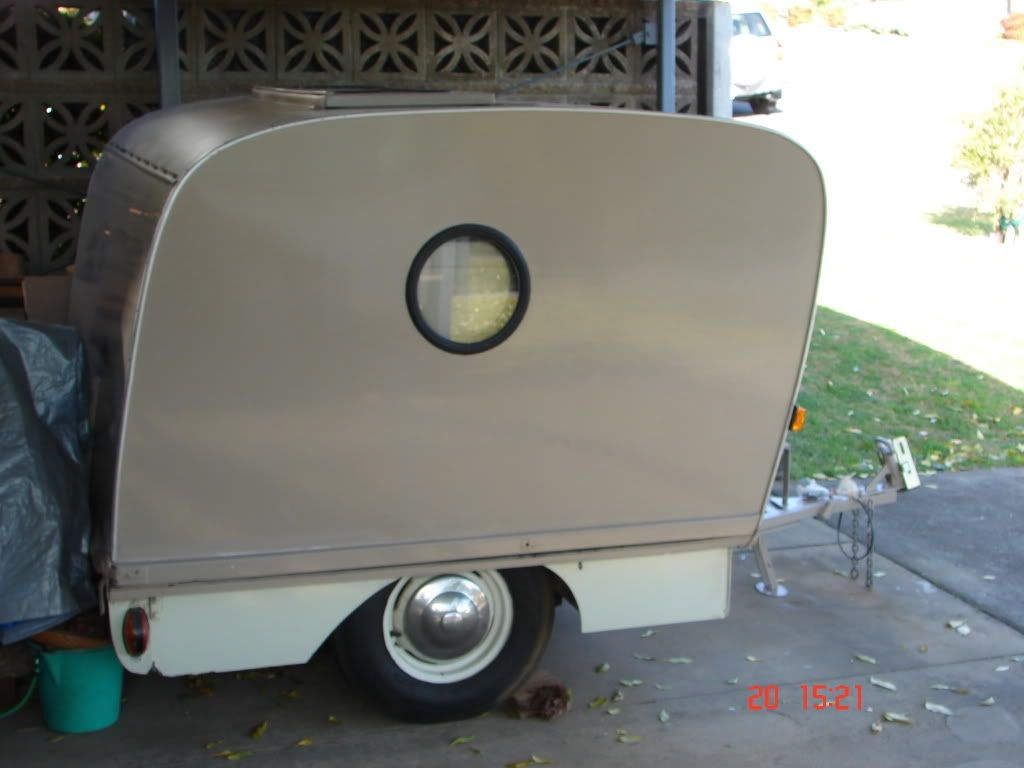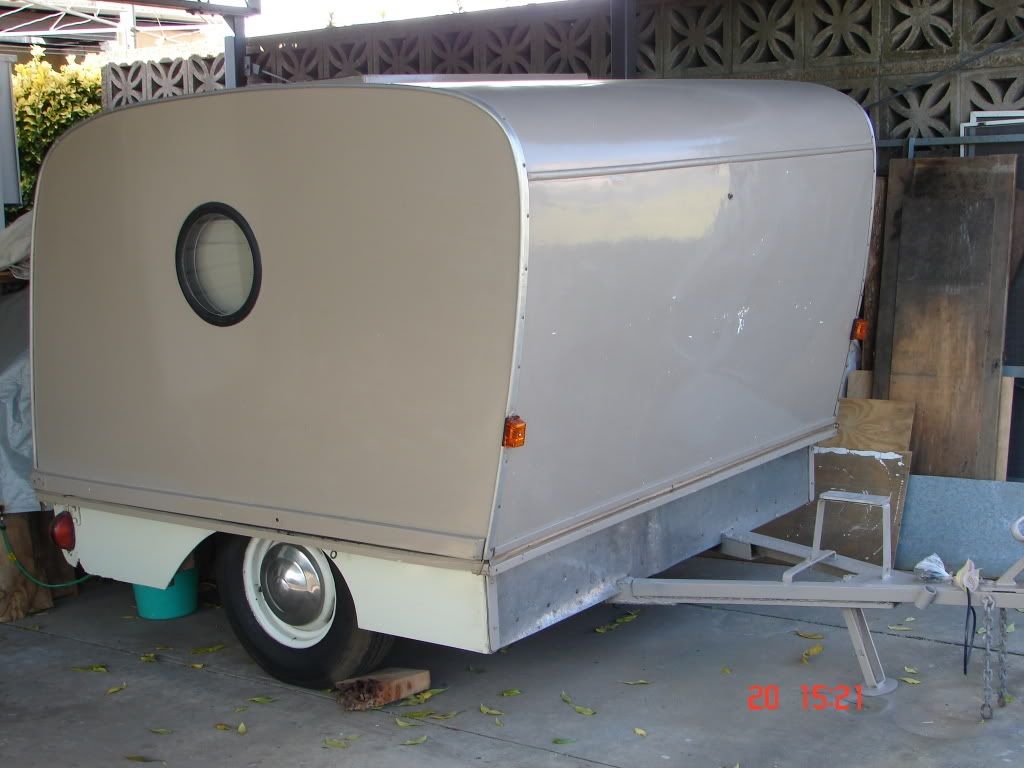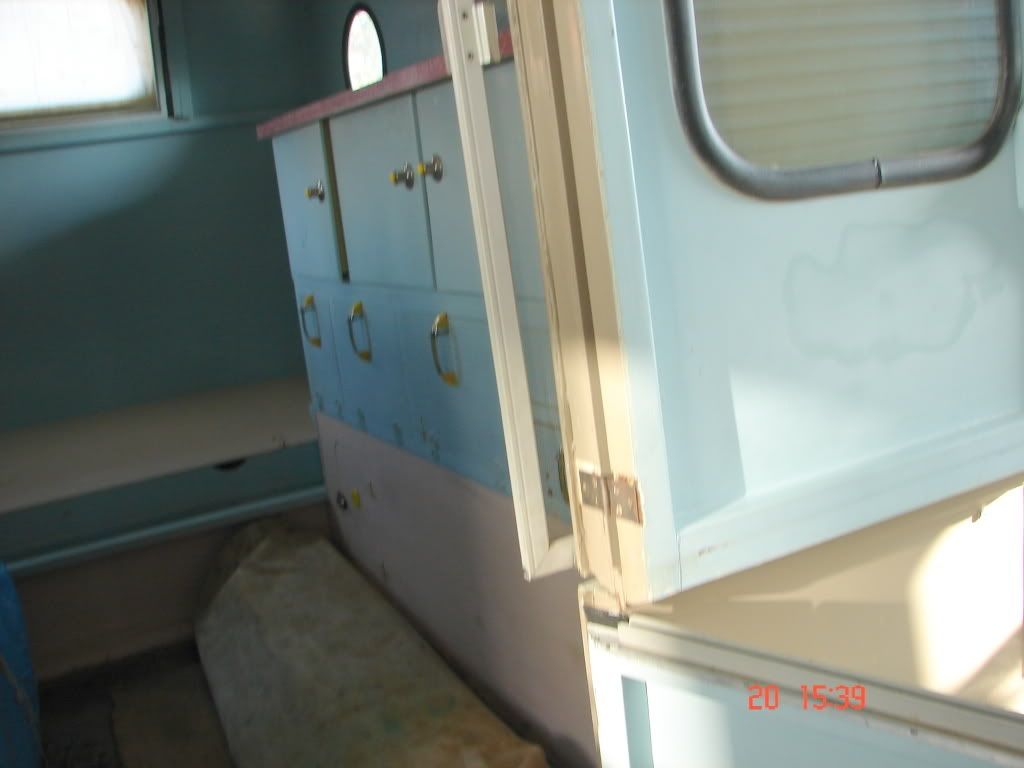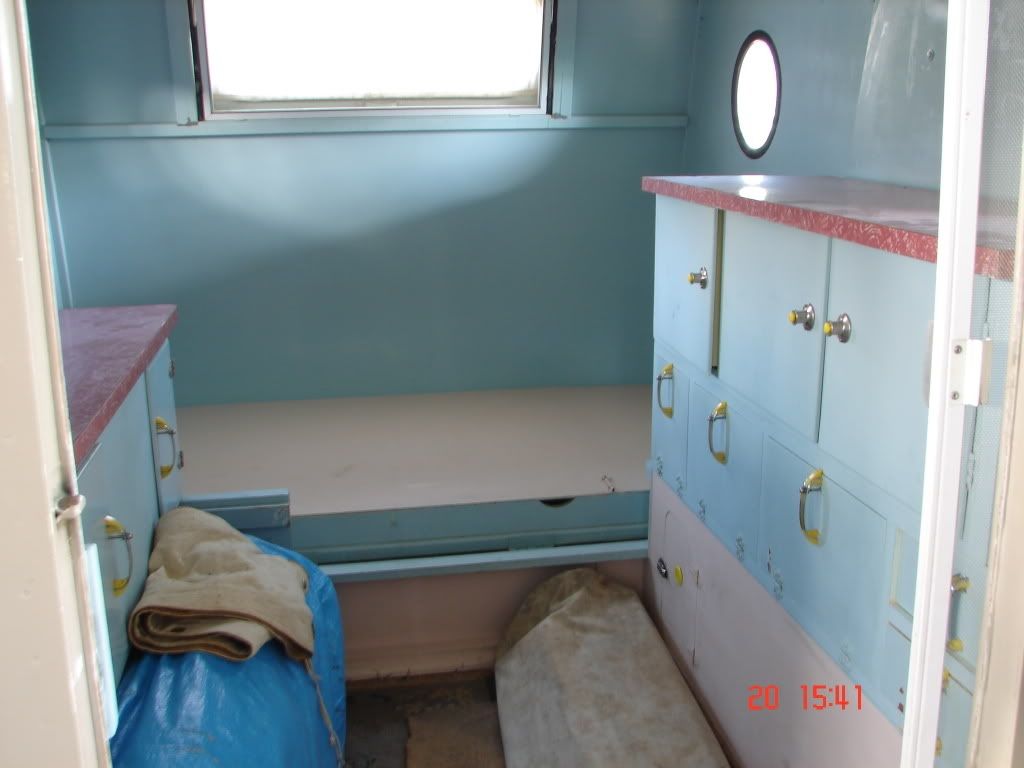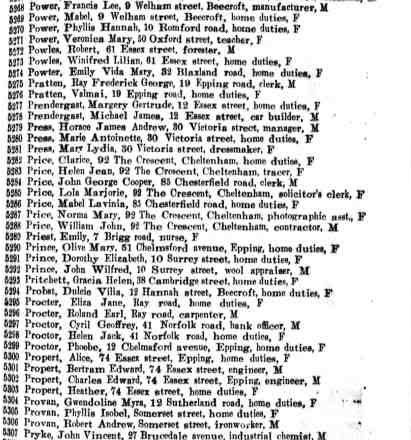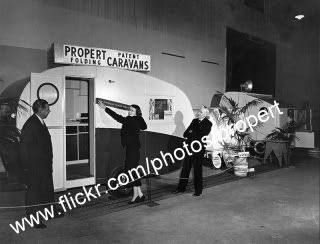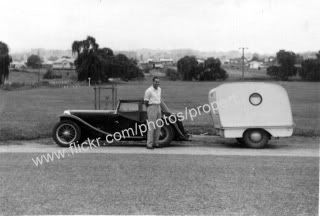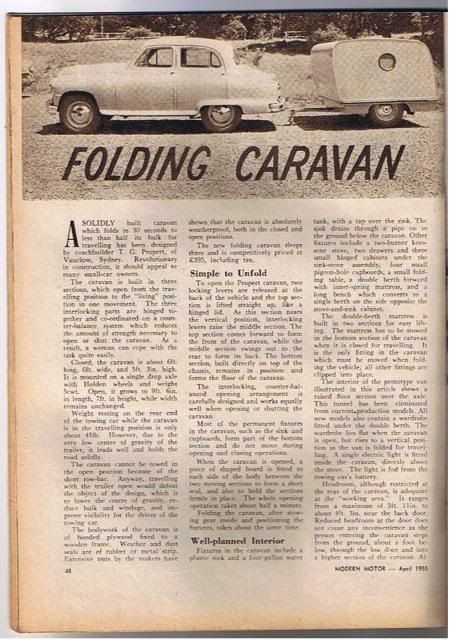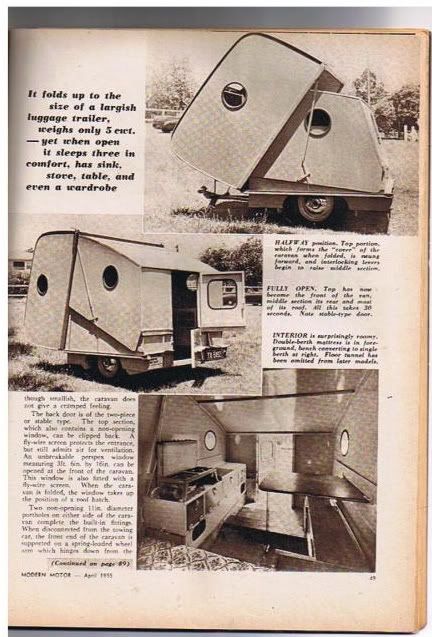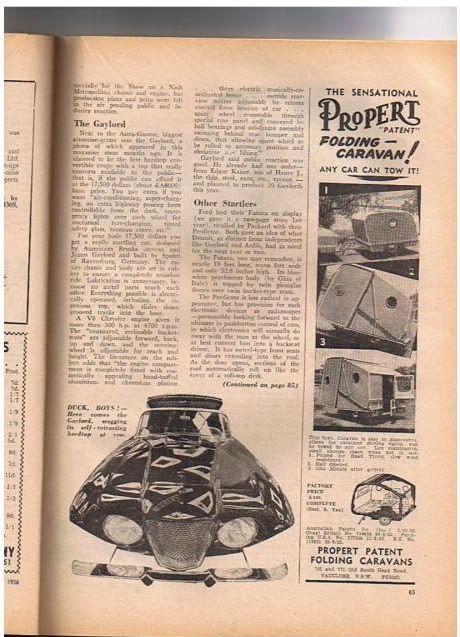Post by Franklin1 on Nov 11, 2007 17:17:10 GMT 10
The following information is taken from the Sydney Powerhouse Museum website, and relates to a Propert folding caravan donated to the museum in 2003.
Link: www.powerhousemuseum.com/collection/database/index.php?irn=319939&search=propert&images=&c=&s=
The museum also acquired a collection of photos detailing the trips this Propert made. These photos are not available publicly, but descriptions can be read at this link:
www.powerhousemuseum.com/collection/database/index.php?irn=342897&search=propert&images=&c=&s=
And now to the very lengthy information detailing the Propert caravan donated:
2004/43/1 Caravan and keys, full size, Propert patent folding caravan, "Overlander", timber/aluminium/glass, made by Propert Gold Seal Products, Vaucluse, New South Wales, Australia, 1952-1960
No image is publically available for this object.
Statement of significance
The Propert "Overlander" folding caravan was built after 1952 and purchased second-hand from a family at Hornsby, NSW, in 1979 by the donors, Vic and Cheryl Perry. It was built by Propert family business, Gold Seal Products, of Vaucluse, NSW, a firm that had formerly built bus bodies. It was designed to fill a niche in the very popular caravan culture of post-WWII Australia. The newly released Holdens and the powerful American cars were able to cope with the weight of the large caravans but these cars were beyond the financial reach of many during that era. Many families were only able to afford and operate the relatively low-powered English and European sedans and the folding caravans and vanettes were a means by which these owners could take part in the trend for cheap, self contained holiday travel. However, many of the folding caravans of the period were little more than tents on trailers. The Propert folding caravan, however, offered large van security in a compact form. Furthermore, the 1950s was a time of increased car ownership in Australia and the end of petrol rationing. For the first time Australians had access to a motor vehicle and the disposable income and leisure time to enjoy it. Although caravans had existed in Australia from the 1920s it was not until the 1960s that family caravanning holidays became very popular. The caravan is an excellent example of a locally-built product from a firm which had an fine reputation, in the production of the folding caravans. As well as this the caravan has good provenance from 1979 until acquired by the Museum in 2003. It was used by the donors for weekend trips away and holidays to places such as the Snowy Mountains, Victoria and a three-month trip to Queensland.
Description: Caravan and keys, full size, Propert patent folding caravan, "Overlander", timber/aluminium/glass, made by Propert Gold Seal Products, Vaucluse, New South Wales, Australia, 1952-1960
The folding caravan is made of wood and metal construction and, with a single lift, the length and height can be virtually doubled. The caravan comprises three main parts: section one is the floor base and sides; section two is the inner cover with an open front end and a door in the rear; and section three the outer complete shell cover. In erecting the caravan the front (car end) half of the caravan roof is slid over the back end. Four black-coloured locking brackets, two on either side, are placed on the outside of the van in the thin space between the front and rear sections. Twelve wing nuts (kept in a red drawstring bag), secure the black locking brackets to the outside, six on each side. The two long wing bolts, also in the small red bag, secure the black brackets from the inside through holes on either side of the walls. The yellow, blue and white chequered curtains (in the larger calico drawstring bag) are then placed over the side windows. These can only be hung once the caravan is set up and must be removed before dismantling the van.
The caravan weighs 5 cwt (254 kg), has Volkswagen windows, 13 inch (33cm) Holden disc wheels, Allis Chalmers tractor bearings, a one piece drop-type axle, and drawbar under the rear of the steel box section with a ball and socket hitch. A spare wheel and tyre are affixed to the 'goose-neck' which has been lengthened to allow the caravan to be used while still connected to the tow vehicle; (this was not possible with the original short neck as the caravan body, and when unfolded, would strike the back of the tow vehicle.) The tow hitch takes a 1 7/8 inch (47.62 mm) tow ball (current standard is 50mm). Two fold down supports are on the sides, at the rear, to support the caravan when it is disconnected from the tow vehicle.
Seven windows, including a skylight illuminate the interior of the caravan. Access is by a rear door. Inside, the caravan was advertised to sleep three but two was more comfortable. It is fitted out with a raised area at the front end of the caravan on which is placed two fabric covered foam mattresses. A drain board and small sink with a Shields "Jetflame" two-burner gas stove sit on a bench against the right inside wall of the van. A cover is provided for the sink to convert it into extra bench space and is surfaced with red "Laminex". A removable rectangular water tank with filler hole handle sits behind the stove. Against the opposite wall a side bench area converts, with the addition of an extra piece of timber, to make up the base of a small single bed. There is storage space under the bench, double bed area and sink.
A black and white painted NSW registration plate "TA.4596" is affixed to the rear to the right of the door. Taillights, brake lights, blinkers and reflectors are fitted at the rear.
The donors painted the trailer light blue on the body and dark blue on the base (it had originally been white on a lime green base), added linoleum in about 1980, a power point and a small fire extinguisher fitted to the back wall inside the door on the right.
Production notes: The Propert folding caravan was designed in Sydney and patented in Australia on 2/10/1952. The manufacturer's plate on the back of the caravan gives the patent dates as late as 31/8/1953 although it is not known exactly when the "Overlander" Propert folding caravan was built. It was manufactured by Propert Gold Seal Products or Propert Trailway Products , 765 and 771 Old South Head Road, Vaucluse, NSW, telephone 37 2692. It bears the serial number 176 on the maker's plate screwed to the rear of the caravan.
The Propert family arrived in Australian from England in 1877 aboard the "Samuel Plimsoll". Over many years the family has designed and manufactured a wide range of products including wine barrels, truck bodies, folding caravans and eggbeaters. Thomas Propert (1889-1969) founded the Propert Body Building Works in Sydney in 1910. For twenty years the company built car bodies for imported chassis but, partly in response to the economic downturn in the economy and changes to car assembly industry, it moved into caravan building in the 1930s. Today the firm manufactures bathroom and kitchen scales.
Several other collapsible type caravans were being made in Australia in the 1950s including the "Foldvan" by C.T. Woods of West Preston, Vic, and the "Smal-a-Van" in Unley, S.A.
The Propert folding caravan was built after 1953 and purchased second-hand from a family at Hornsby, NSW, in 1979 by the donors, Vic and Cheryl Perry. They were given strict instructions regarding the care of "her" (the caravan) by the former owner and used it for many happy holidays and weekends. Holidays included a camping holiday with a Nissan Patrol and small outboard boat on Lake Burrendong in 1980. In 1986 the Perrys bought a block of land at Ilford, NSW, and built a holiday house there, camping in the caravan while it was under construction. In 1988 they took the caravan to the Snowy Mountains and Nimmitabel where it accommodated four people and a dog. The caravan's longest trip was undertaken in 1992, a 3-month trip to Queensland including Harvey Bay and Airlie Beach. At Airlie Beach the jockey wheel on the caravan collapsed during the night causing the van to partly fold up with the Perrys inside. Luckily, they were able to escape through the half door. The Perrys were delighted that the caravan managed the trip all the way to the Daintree Forest and apart from a flat tyre and the jockey wheel needing to be welded, there were no other mishaps. Wherever the Perrys went they were the centre of attention over their curious little caravan from other campers and holidaymakers. At the Yamba caravan park a group of twenty people arrived as they were setting up so they had to repeatedly demonstrate the caravan's folding and unfolding procedure. They regularly received offers to buy the caravan on the spot by strangers. The Perrys' last trip in the caravan was to Victoria in 2001 along the Murray River through the Grampians and along the Great Ocean Road.
Acquisition credit line: Gift of Vic and Cheryl Perry, 2004
Marks: A metal identification plate is fixed to the caravan body, to the left of the door at the rear. The plate contains the following information:
"PROPERT PATENT/ FOLDING CARAVAN/ 765 & 771 OLD SOUTH HEAD ROAD/ VAUCLUSE, N.S.W./ PHONE 37.2692/SER. No 176".
"AUSTRALIA 156.007/ 2/10/52/ GREAT BRITAIN 744.650. 24.9.53/ NEW ZEALAND 114831. 30/8/53/ U.S. AMERICA (APPL.) 377580. 31.8.53".
In a circle beneath "PROPERT" and before "FOLDING" is an image of a goose flying left to right, in an engraved circle, with the word "Overlander" inscribed beneath the goose.
Registration number of acquisition: 2004/43/1 (the 43rd acquisition made in 2004)
Production date: 1953 - 1954
Height: 2415 mm
Width: 1910 mm
Post by Franklin1 on 15 November 2007 and recreated after being deleted in error:
Propert caravan at the National Museum of Australia, Canberra:
An article about this exhibit can be found via this link: (I don't know whether I can copy and paste it here legally... . If the link ever fails, I have the article copied on my computer.)
. If the link ever fails, I have the article copied on my computer.)
www.goseeaustralia.com.au/ViewEditorial.asp?EdID=72

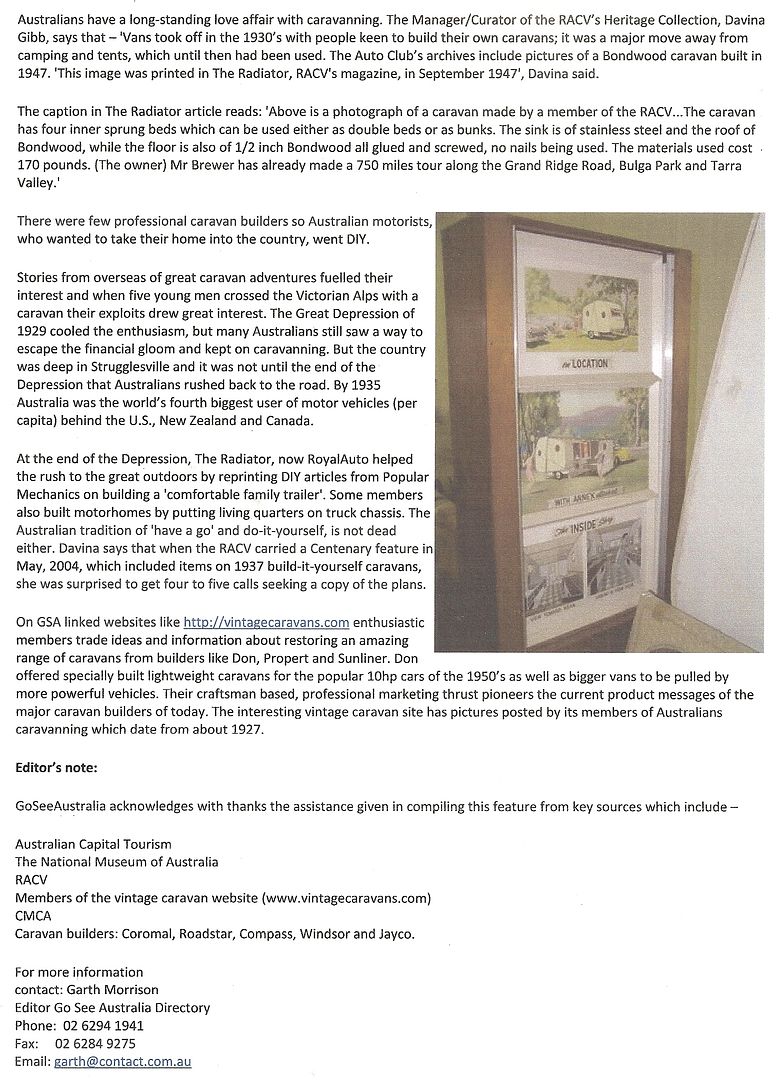
Link: www.powerhousemuseum.com/collection/database/index.php?irn=319939&search=propert&images=&c=&s=
The museum also acquired a collection of photos detailing the trips this Propert made. These photos are not available publicly, but descriptions can be read at this link:
www.powerhousemuseum.com/collection/database/index.php?irn=342897&search=propert&images=&c=&s=
And now to the very lengthy information detailing the Propert caravan donated:
2004/43/1 Caravan and keys, full size, Propert patent folding caravan, "Overlander", timber/aluminium/glass, made by Propert Gold Seal Products, Vaucluse, New South Wales, Australia, 1952-1960
No image is publically available for this object.
Statement of significance
The Propert "Overlander" folding caravan was built after 1952 and purchased second-hand from a family at Hornsby, NSW, in 1979 by the donors, Vic and Cheryl Perry. It was built by Propert family business, Gold Seal Products, of Vaucluse, NSW, a firm that had formerly built bus bodies. It was designed to fill a niche in the very popular caravan culture of post-WWII Australia. The newly released Holdens and the powerful American cars were able to cope with the weight of the large caravans but these cars were beyond the financial reach of many during that era. Many families were only able to afford and operate the relatively low-powered English and European sedans and the folding caravans and vanettes were a means by which these owners could take part in the trend for cheap, self contained holiday travel. However, many of the folding caravans of the period were little more than tents on trailers. The Propert folding caravan, however, offered large van security in a compact form. Furthermore, the 1950s was a time of increased car ownership in Australia and the end of petrol rationing. For the first time Australians had access to a motor vehicle and the disposable income and leisure time to enjoy it. Although caravans had existed in Australia from the 1920s it was not until the 1960s that family caravanning holidays became very popular. The caravan is an excellent example of a locally-built product from a firm which had an fine reputation, in the production of the folding caravans. As well as this the caravan has good provenance from 1979 until acquired by the Museum in 2003. It was used by the donors for weekend trips away and holidays to places such as the Snowy Mountains, Victoria and a three-month trip to Queensland.
Description: Caravan and keys, full size, Propert patent folding caravan, "Overlander", timber/aluminium/glass, made by Propert Gold Seal Products, Vaucluse, New South Wales, Australia, 1952-1960
The folding caravan is made of wood and metal construction and, with a single lift, the length and height can be virtually doubled. The caravan comprises three main parts: section one is the floor base and sides; section two is the inner cover with an open front end and a door in the rear; and section three the outer complete shell cover. In erecting the caravan the front (car end) half of the caravan roof is slid over the back end. Four black-coloured locking brackets, two on either side, are placed on the outside of the van in the thin space between the front and rear sections. Twelve wing nuts (kept in a red drawstring bag), secure the black locking brackets to the outside, six on each side. The two long wing bolts, also in the small red bag, secure the black brackets from the inside through holes on either side of the walls. The yellow, blue and white chequered curtains (in the larger calico drawstring bag) are then placed over the side windows. These can only be hung once the caravan is set up and must be removed before dismantling the van.
The caravan weighs 5 cwt (254 kg), has Volkswagen windows, 13 inch (33cm) Holden disc wheels, Allis Chalmers tractor bearings, a one piece drop-type axle, and drawbar under the rear of the steel box section with a ball and socket hitch. A spare wheel and tyre are affixed to the 'goose-neck' which has been lengthened to allow the caravan to be used while still connected to the tow vehicle; (this was not possible with the original short neck as the caravan body, and when unfolded, would strike the back of the tow vehicle.) The tow hitch takes a 1 7/8 inch (47.62 mm) tow ball (current standard is 50mm). Two fold down supports are on the sides, at the rear, to support the caravan when it is disconnected from the tow vehicle.
Seven windows, including a skylight illuminate the interior of the caravan. Access is by a rear door. Inside, the caravan was advertised to sleep three but two was more comfortable. It is fitted out with a raised area at the front end of the caravan on which is placed two fabric covered foam mattresses. A drain board and small sink with a Shields "Jetflame" two-burner gas stove sit on a bench against the right inside wall of the van. A cover is provided for the sink to convert it into extra bench space and is surfaced with red "Laminex". A removable rectangular water tank with filler hole handle sits behind the stove. Against the opposite wall a side bench area converts, with the addition of an extra piece of timber, to make up the base of a small single bed. There is storage space under the bench, double bed area and sink.
A black and white painted NSW registration plate "TA.4596" is affixed to the rear to the right of the door. Taillights, brake lights, blinkers and reflectors are fitted at the rear.
The donors painted the trailer light blue on the body and dark blue on the base (it had originally been white on a lime green base), added linoleum in about 1980, a power point and a small fire extinguisher fitted to the back wall inside the door on the right.
Production notes: The Propert folding caravan was designed in Sydney and patented in Australia on 2/10/1952. The manufacturer's plate on the back of the caravan gives the patent dates as late as 31/8/1953 although it is not known exactly when the "Overlander" Propert folding caravan was built. It was manufactured by Propert Gold Seal Products or Propert Trailway Products , 765 and 771 Old South Head Road, Vaucluse, NSW, telephone 37 2692. It bears the serial number 176 on the maker's plate screwed to the rear of the caravan.
The Propert family arrived in Australian from England in 1877 aboard the "Samuel Plimsoll". Over many years the family has designed and manufactured a wide range of products including wine barrels, truck bodies, folding caravans and eggbeaters. Thomas Propert (1889-1969) founded the Propert Body Building Works in Sydney in 1910. For twenty years the company built car bodies for imported chassis but, partly in response to the economic downturn in the economy and changes to car assembly industry, it moved into caravan building in the 1930s. Today the firm manufactures bathroom and kitchen scales.
Several other collapsible type caravans were being made in Australia in the 1950s including the "Foldvan" by C.T. Woods of West Preston, Vic, and the "Smal-a-Van" in Unley, S.A.
The Propert folding caravan was built after 1953 and purchased second-hand from a family at Hornsby, NSW, in 1979 by the donors, Vic and Cheryl Perry. They were given strict instructions regarding the care of "her" (the caravan) by the former owner and used it for many happy holidays and weekends. Holidays included a camping holiday with a Nissan Patrol and small outboard boat on Lake Burrendong in 1980. In 1986 the Perrys bought a block of land at Ilford, NSW, and built a holiday house there, camping in the caravan while it was under construction. In 1988 they took the caravan to the Snowy Mountains and Nimmitabel where it accommodated four people and a dog. The caravan's longest trip was undertaken in 1992, a 3-month trip to Queensland including Harvey Bay and Airlie Beach. At Airlie Beach the jockey wheel on the caravan collapsed during the night causing the van to partly fold up with the Perrys inside. Luckily, they were able to escape through the half door. The Perrys were delighted that the caravan managed the trip all the way to the Daintree Forest and apart from a flat tyre and the jockey wheel needing to be welded, there were no other mishaps. Wherever the Perrys went they were the centre of attention over their curious little caravan from other campers and holidaymakers. At the Yamba caravan park a group of twenty people arrived as they were setting up so they had to repeatedly demonstrate the caravan's folding and unfolding procedure. They regularly received offers to buy the caravan on the spot by strangers. The Perrys' last trip in the caravan was to Victoria in 2001 along the Murray River through the Grampians and along the Great Ocean Road.
Acquisition credit line: Gift of Vic and Cheryl Perry, 2004
Marks: A metal identification plate is fixed to the caravan body, to the left of the door at the rear. The plate contains the following information:
"PROPERT PATENT/ FOLDING CARAVAN/ 765 & 771 OLD SOUTH HEAD ROAD/ VAUCLUSE, N.S.W./ PHONE 37.2692/SER. No 176".
"AUSTRALIA 156.007/ 2/10/52/ GREAT BRITAIN 744.650. 24.9.53/ NEW ZEALAND 114831. 30/8/53/ U.S. AMERICA (APPL.) 377580. 31.8.53".
In a circle beneath "PROPERT" and before "FOLDING" is an image of a goose flying left to right, in an engraved circle, with the word "Overlander" inscribed beneath the goose.
Registration number of acquisition: 2004/43/1 (the 43rd acquisition made in 2004)
Production date: 1953 - 1954
Height: 2415 mm
Width: 1910 mm
Post by Franklin1 on 15 November 2007 and recreated after being deleted in error:
Propert caravan at the National Museum of Australia, Canberra:
An article about this exhibit can be found via this link: (I don't know whether I can copy and paste it here legally...
 . If the link ever fails, I have the article copied on my computer.)
. If the link ever fails, I have the article copied on my computer.)www.goseeaustralia.com.au/ViewEditorial.asp?EdID=72




